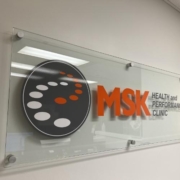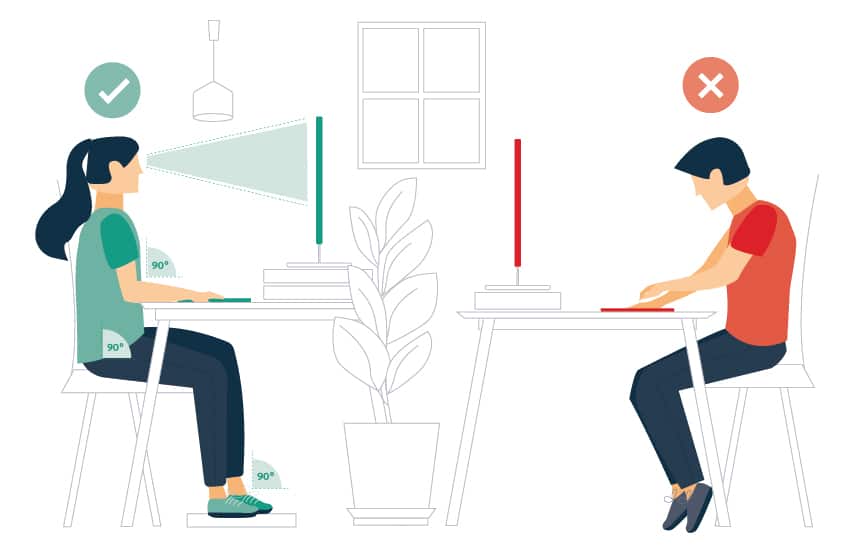7 Common Mistakes to Avoid When Managing Back Pain
7 Common Mistakes to Avoid When Managing Back Pain: A Guide to Finding Relief
Back pain is an all-too-familiar foe for many, often creeping in uninvited and lingering longer than we’d like. Whether it’s the result of a long day at the office, an intense workout, or even a poor night’s sleep, managing back pain can feel like navigating a maze without a map. In the quest for relief, it’s easy to fall into traps that can exacerbate the very discomfort we’re trying to alleviate.
In this listicle, we’ll explore seven common mistakes that people often make when dealing with back pain, offering insights and practical tips to help you steer clear of these pitfalls. By understanding these missteps, you’ll be better equipped to make informed decisions about your pain management strategies and ultimately pave the way toward a healthier, more comfortable back. So, let’s dive in and uncover the key misjudgments to avoid on your journey to relief!
1) Ignoring the Importance of a Proper Diagnosis: Many individuals attempt to self-diagnose their back pain, which can lead to ineffective treatment and prolonged discomfort. Consulting a healthcare professional for an accurate diagnosis is crucial for effective management
Many people experience back pain at some point in their lives, and while it might be tempting to jump to conclusions about the cause, self-diagnosis can be misleading and potentially harmful. Relying on anecdotal evidence or online resources may lead you to believe that your discomfort stems from a common issue like muscle strain or poor posture. However, back pain can be a symptom of a variety of underlying conditions, including herniated discs, arthritis, or even more serious issues. Without a proper diagnosis from a qualified healthcare professional, you risk pursuing ineffective treatment methods that do little to alleviate your pain, prolonging your discomfort and possibly exacerbating the problem.
Consulting a healthcare provider ensures that you receive a comprehensive evaluation and an accurate diagnosis tailored to your specific situation. This process may involve a physical examination, imaging tests, or even referrals to specialists. Understanding the root cause of your back pain is essential for effective management, which may include a combination of physical therapy, medication, or lifestyle changes. By prioritizing a professional diagnosis, you empower yourself to make informed decisions about your treatment plan and significantly improve your chances of recovery.
2) Relying Solely on Pain Medication: While pain relievers can provide temporary relief, depending solely on medication can mask underlying issues. A holistic approach that includes physical therapy, exercise, and lifestyle changes is essential for long-term recovery
Many individuals dealing with back pain often turn to pain relievers as their primary solution. While these medications can provide temporary relief, relying solely on them can obscure the underlying causes of discomfort. This approach may lead to a cycle of dependency, where one continually seeks medication without addressing the root of the problem. Instead of masking the pain, it’s crucial to explore other avenues that promote healing and overall well-being.
Integrating a holistic approach can make a significant difference in managing back pain effectively. Consider incorporating the following elements into your recovery plan:
- Physical Therapy: Targeted exercises can strengthen core muscles and improve flexibility.
- Regular Exercise: Activities such as walking, swimming, or yoga can enhance mobility and reduce stiffness.
- Lifestyle Changes: Adjustments like ergonomic workspaces and proper lifting techniques can prevent further injury.
By embracing a comprehensive strategy, you not only alleviate pain but also empower your body to heal itself. This multifaceted approach promotes long-term recovery and helps you regain control over your life.
3) Neglecting Core Strengthening Exercises: A strong core supports the spine and can alleviate back pain. Skipping core strengthening exercises can lead to muscle imbalances and increased strain on the back, hindering recovery efforts
One of the most critical aspects of back pain management is often overlooked: core strengthening exercises. A robust core is essential for maintaining proper posture and supporting the spine, which can significantly alleviate discomfort. When individuals skip these exercises, they may inadvertently create muscle imbalances that place additional strain on the back. This not only prolongs recovery but can also exacerbate existing pain, making it crucial to incorporate core workouts into your routine. Consider adding exercises such as planks, bridges, and pelvic tilts to your regimen to build a solid foundation.
To illustrate the importance of core strength, here’s a simple comparison of the benefits of a strong core versus a weak core:
| Strong Core | Weak Core |
|---|---|
| Improved posture | Slouched stance |
| Reduced back pain | Increased discomfort |
| Enhanced athletic performance | Limited physical activity |
| Better balance and stability | Higher risk of falls |
Incorporating core exercises into your daily routine can lead to significant improvements in your overall back health. Remember, consistency is key. Aim for short sessions multiple times a week, and you’ll likely notice a positive shift in your back pain management efforts.
4) Overdoing It with Bed Rest: While rest is important, excessive bed rest can weaken muscles and worsen back pain. Gradually incorporating gentle movement and activities can facilitate healing and improve overall mobility
While it may seem counterintuitive, too much bed rest can actually exacerbate back pain rather than alleviate it. When you remain sedentary for extended periods, your muscles can weaken, leading to stiffness and reduced flexibility. This phenomenon is often referred to as “deconditioning,” where the body loses strength and endurance due to inactivity. Instead of solely relying on bed rest, it’s crucial to find a balance between rest and gentle movement. Consider incorporating activities such as walking, stretching, or yoga to promote circulation and maintain muscle tone.
To ease back into movement, start with gentle exercises that focus on strengthening the core and improving flexibility. Here are some activities to consider:
- Walking: A simple yet effective way to get your body moving.
- Stretching: Helps maintain flexibility and reduces muscle tension.
- Swimming: Provides a low-impact workout that is easy on the back.
- Yoga: Enhances strength and balance while promoting relaxation.
By gradually incorporating these activities into your routine, you can facilitate healing and enhance your overall mobility. Remember, the goal is to move without pain, so listen to your body and adjust your activities as needed.
5) Poor Posture Habits: Slouching or maintaining poor posture during daily activities can exacerbate back pain. Being mindful of posture while sitting, standing, and lifting can significantly reduce strain on the back
Many individuals unknowingly contribute to their back pain through poor posture habits. Whether you are hunched over a computer, slouching on the couch, or lifting heavy objects incorrectly, these habits can lead to increased strain on your back muscles and spine. To combat this, it’s essential to cultivate a habit of being mindful of your posture throughout the day. Consider the following tips to improve your posture:
- Sitting: Keep your feet flat on the floor and your back straight against the chair. Use a small cushion for lumbar support if needed.
- Standing: Distribute your weight evenly on both feet, and avoid locking your knees. Engage your core to support your spine.
- Lifting: Always bend at the knees and keep the object close to your body. Use your legs to lift, not your back.
Incorporating these practices into your daily routine can make a remarkable difference in alleviating back pain. To help visualize proper posture, consider the following table that outlines common activities and the recommended posture adjustments:
| Activity | Recommended Posture |
|---|---|
| Working at a desk | Sit with your back straight and shoulders relaxed; monitor at eye level. |
| Using a smartphone | Hold the device at eye level to avoid bending your neck down. |
| Carrying groceries | Use a cart or distribute weight evenly on both sides of your body. |
6) Failing to Listen to Your Body: Pushing through pain can lead to further injury. Its essential to pay attention to your body’s signals and adjust activities accordingly to prevent exacerbating back issues
Ignoring the signals your body sends can be a slippery slope, especially when it comes to back pain. Many individuals adopt a “no pain, no gain” mentality, believing that pushing through discomfort is a sign of strength or determination. However, this mindset can lead to more severe injuries and prolong your recovery. It’s essential to recognize that your body is trying to communicate with you. When you experience pain, it’s a cue to pause and assess rather than a challenge to overcome.
Listening to your body involves understanding the difference between normal soreness and pain that could indicate a more serious issue. Here are some ways to ensure you’re tuning in to your body’s needs:
- Take breaks: Allow time for your muscles to recover during physical activities.
- Modify exercises: Adjust your routine to accommodate discomfort, focusing on low-impact alternatives.
- Consult a professional: Seek advice from a healthcare provider if pain persists, rather than self-diagnosing.
7) Neglecting Stress Management: Stress can contribute to muscle tension and exacerbate back pain. Incorporating stress management techniques such as mindfulness, yoga, or meditation can help alleviate both physical and emotional discomfort
Many individuals underestimate the profound impact that stress can have on their physical health, particularly when it comes to back pain. When we’re stressed, our bodies tend to tense up, leading to increased muscle tension and discomfort. This cycle can create a feedback loop where pain leads to stress, and stress leads to more pain. To break free from this cycle, it’s essential to incorporate effective stress management techniques into your daily routine. Consider integrating practices such as mindfulness, yoga, and meditation to help calm the mind and relax the body.
Here are some effective techniques to consider:
- Mindfulness: Focus on the present moment to reduce anxiety and promote relaxation.
- Yoga: Engage in gentle stretches and poses that not only relieve tension but also improve flexibility and strength.
- Meditation: Spend a few minutes each day in quiet reflection to help clear your mind and reduce stress levels.
By prioritizing stress management, you can significantly alleviate both physical and emotional discomfort, paving the way for a more balanced and pain-free life.
The Conclusion
As we wrap up our exploration of the seven common mistakes to avoid when managing back pain, it’s clear that understanding and addressing these pitfalls can pave the way to a healthier, more comfortable life. Remember, the journey to alleviating back pain is often a winding path, filled with trial and error. By steering clear of these missteps, you empower yourself to make informed choices that promote healing and well-being.
Whether you’re seeking relief through exercise, proper posture, or professional help, the key is to listen to your body and prioritize its needs. Each step you take towards better back health is a step towards reclaiming your life—free from the limitations that pain can impose.
So, take a deep breath, reflect on what you’ve learned, and embark on this journey with renewed determination. Your back deserves the best care, and with the right approach, you can turn the page on pain and embrace a future full of movement and vitality. Thank you for joining us, and here’s to a stronger, healthier you!










Leave a Reply
Want to join the discussion?Feel free to contribute!